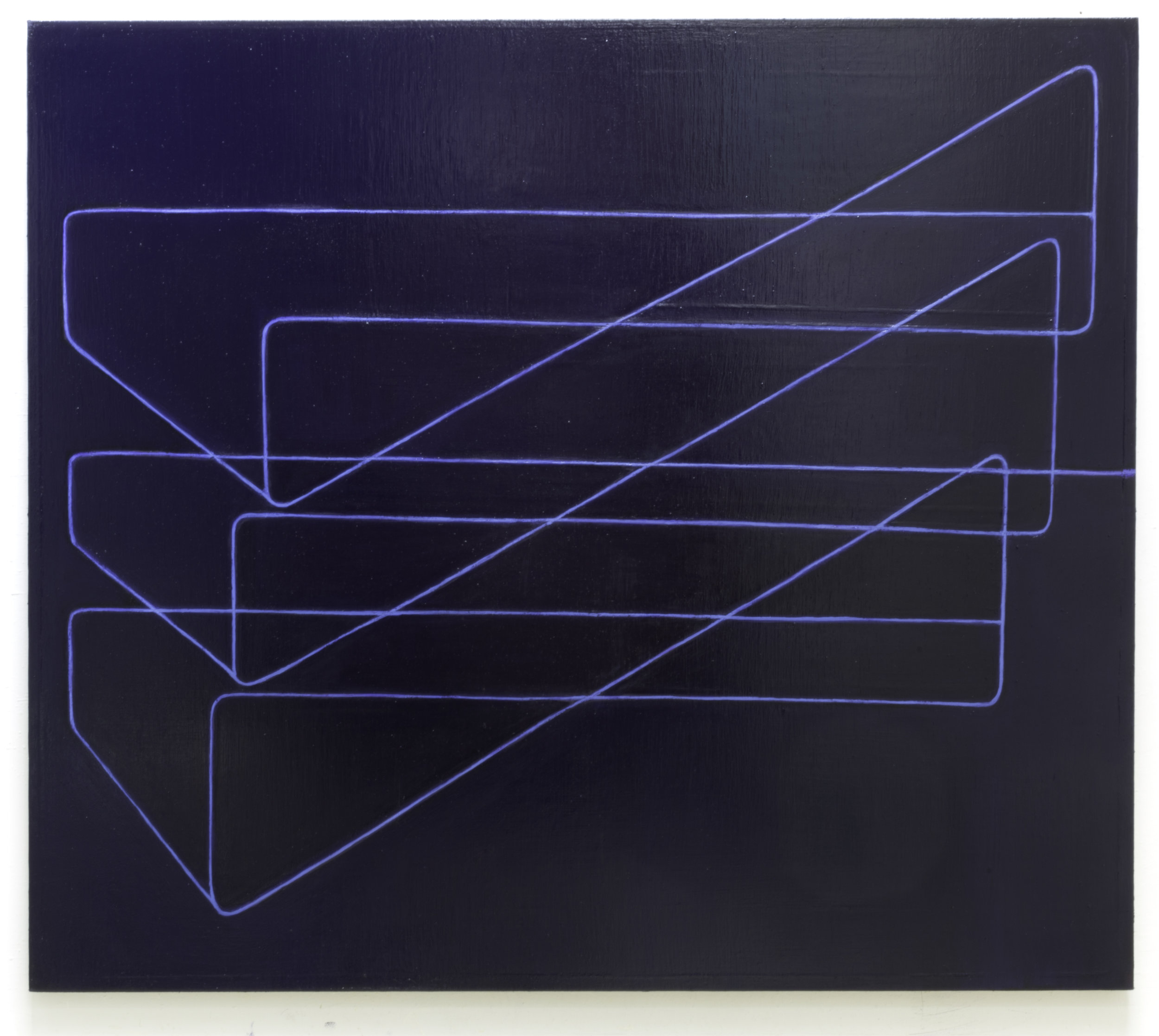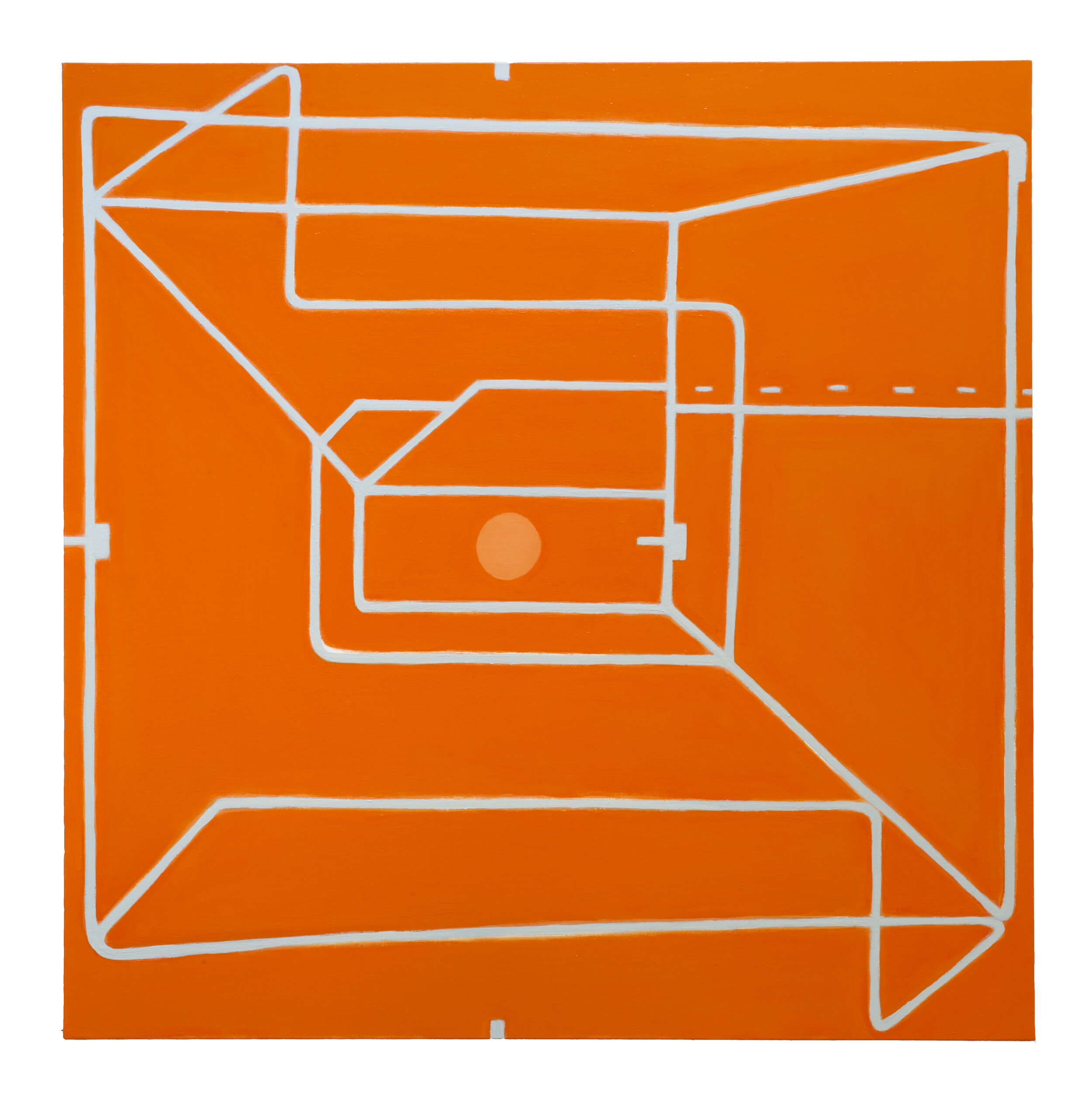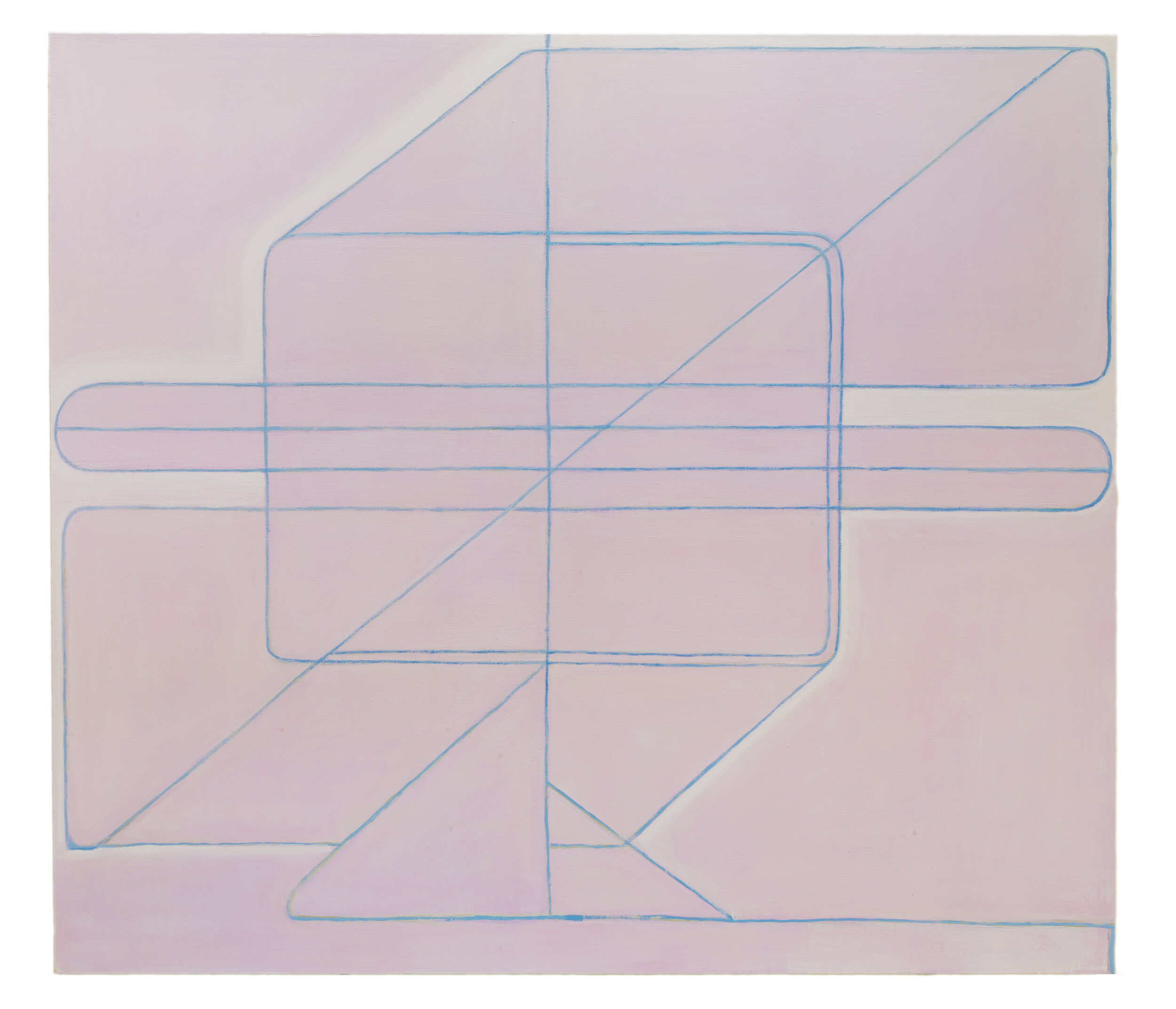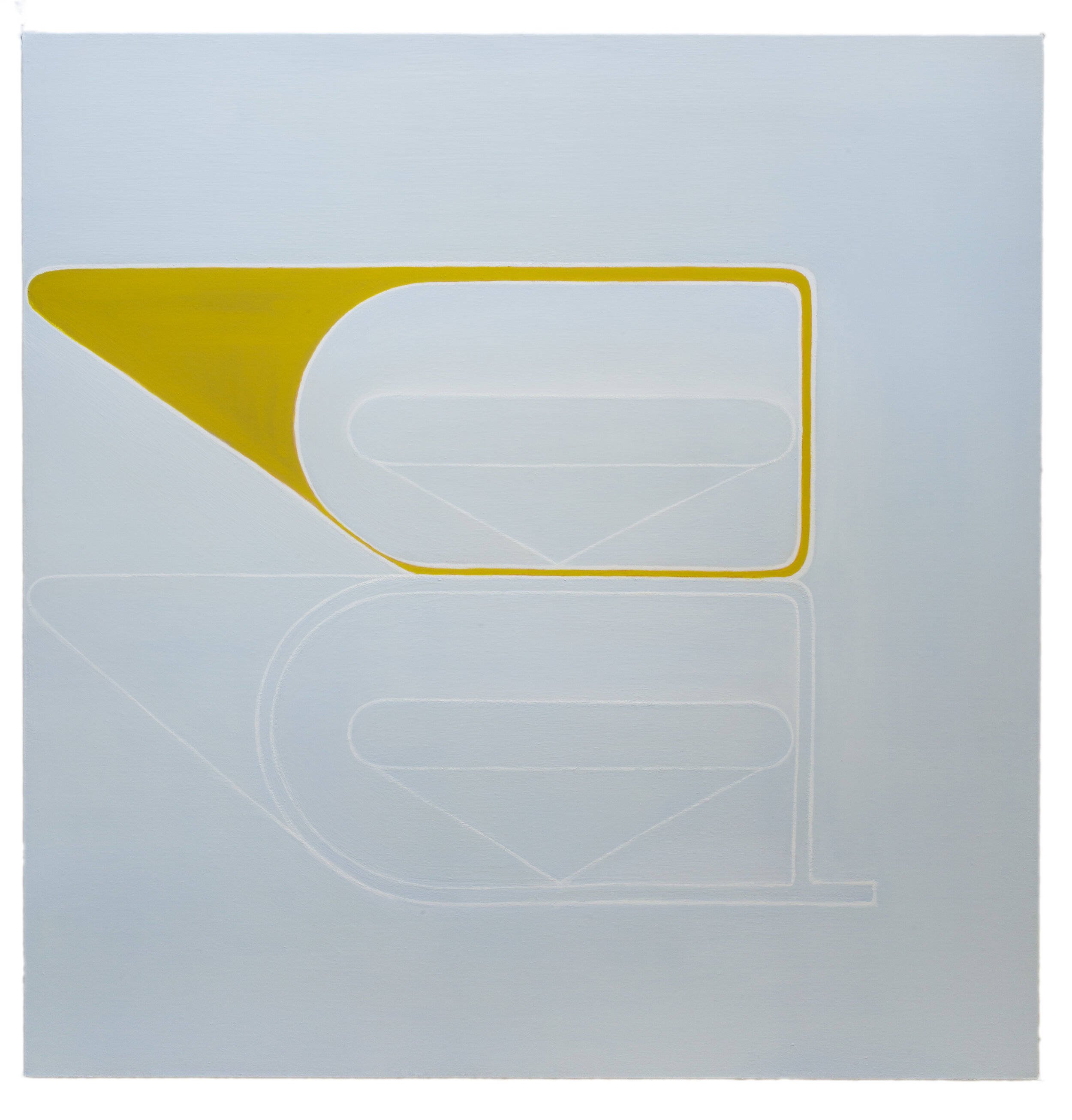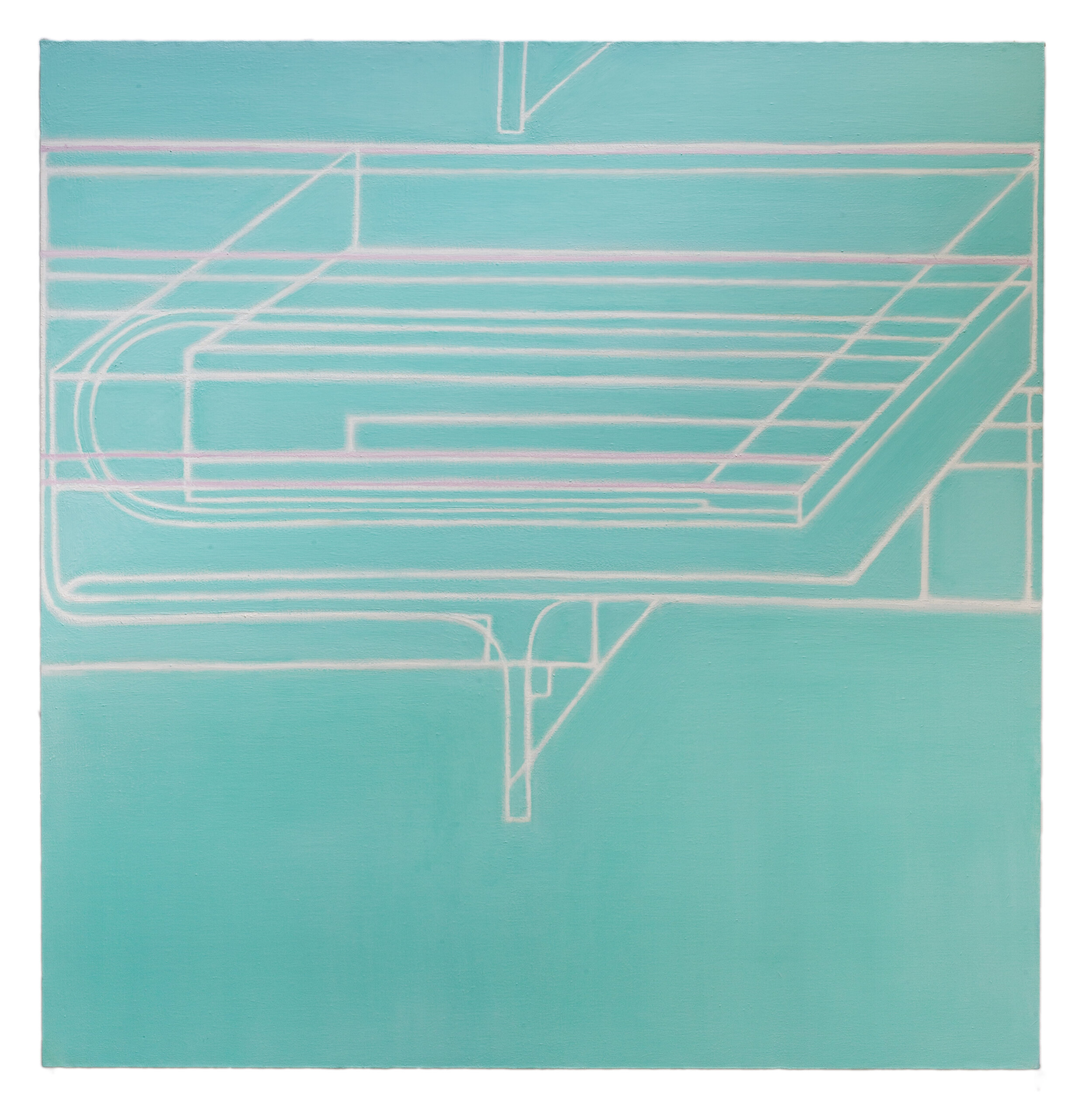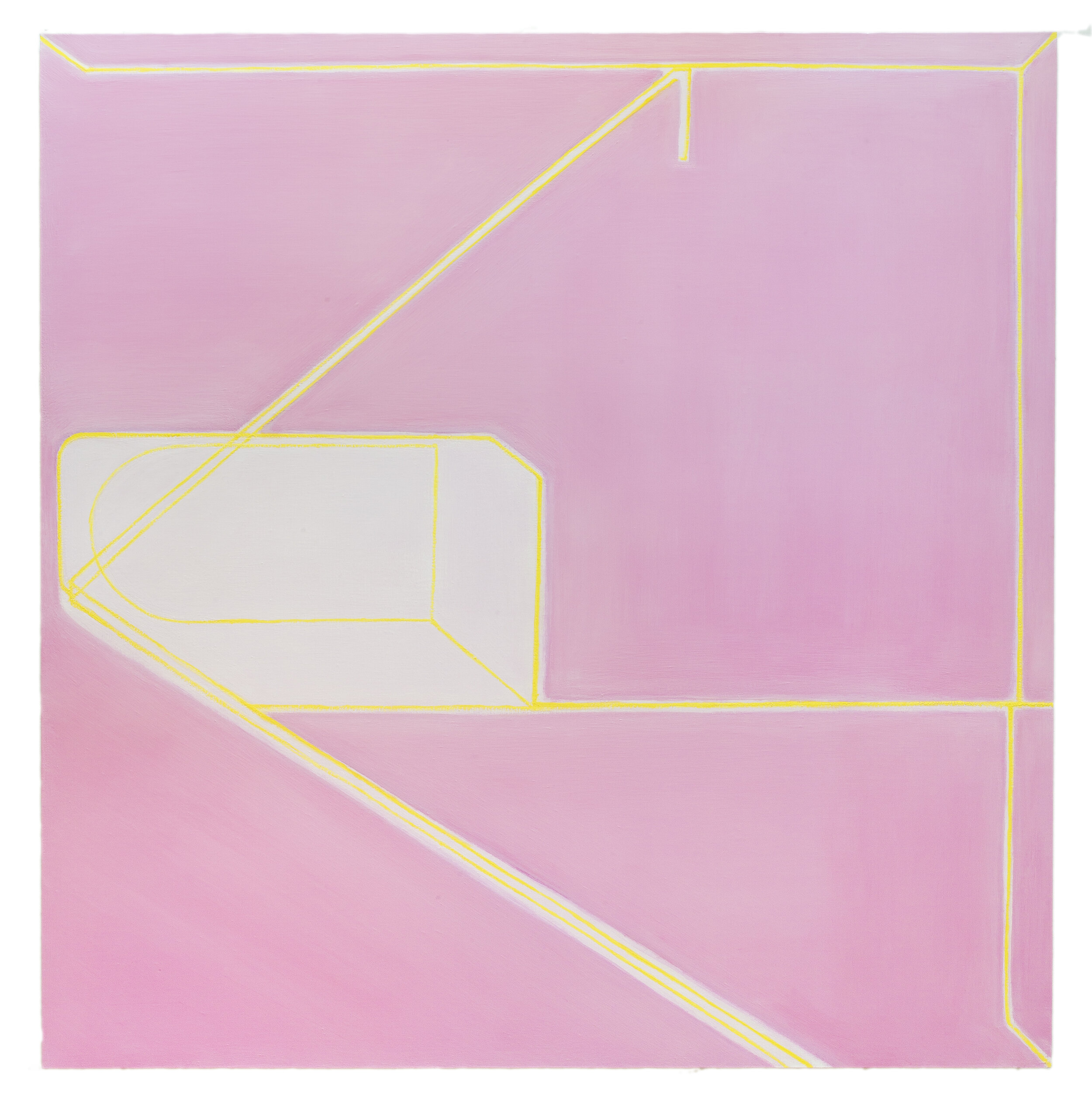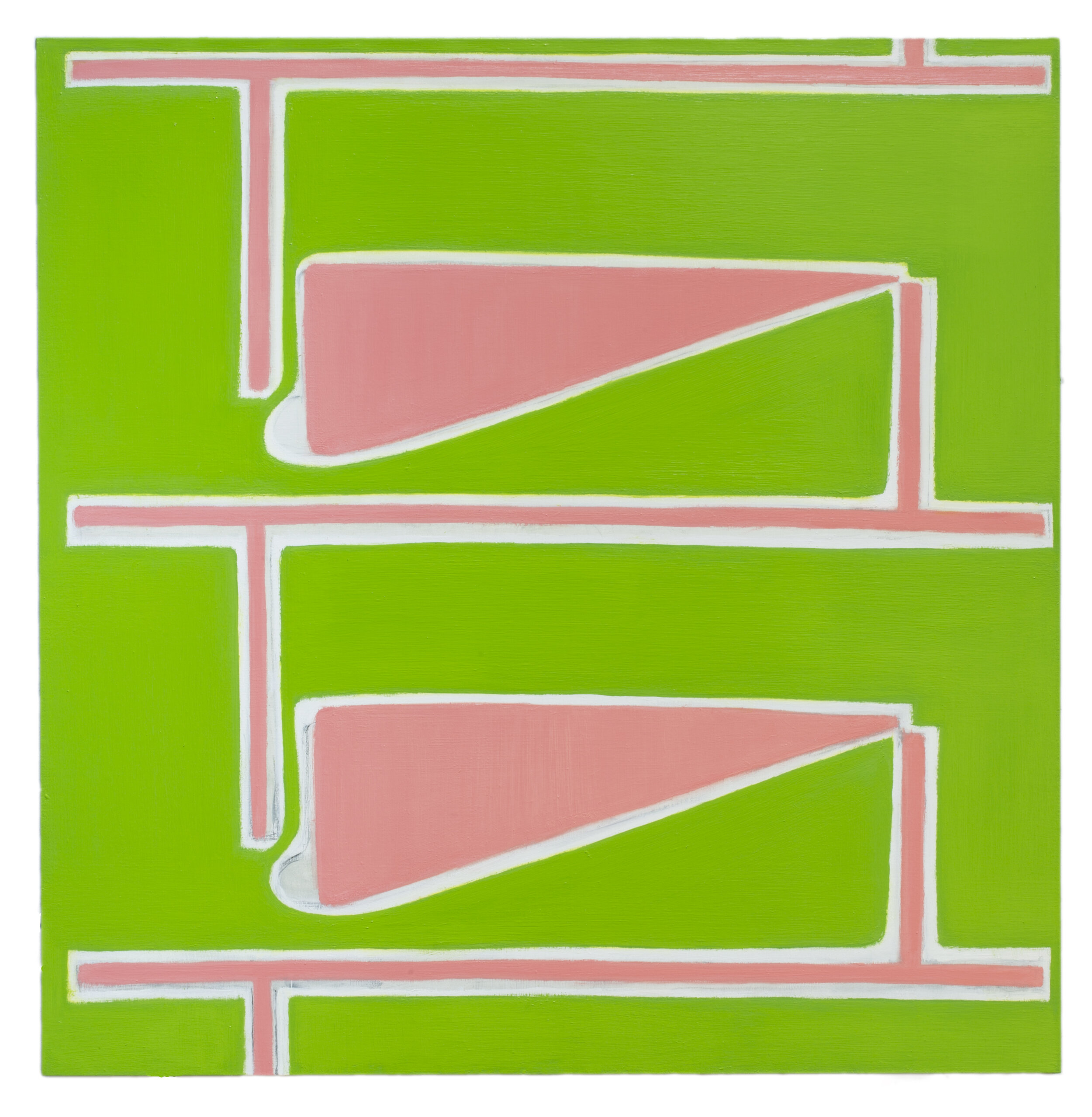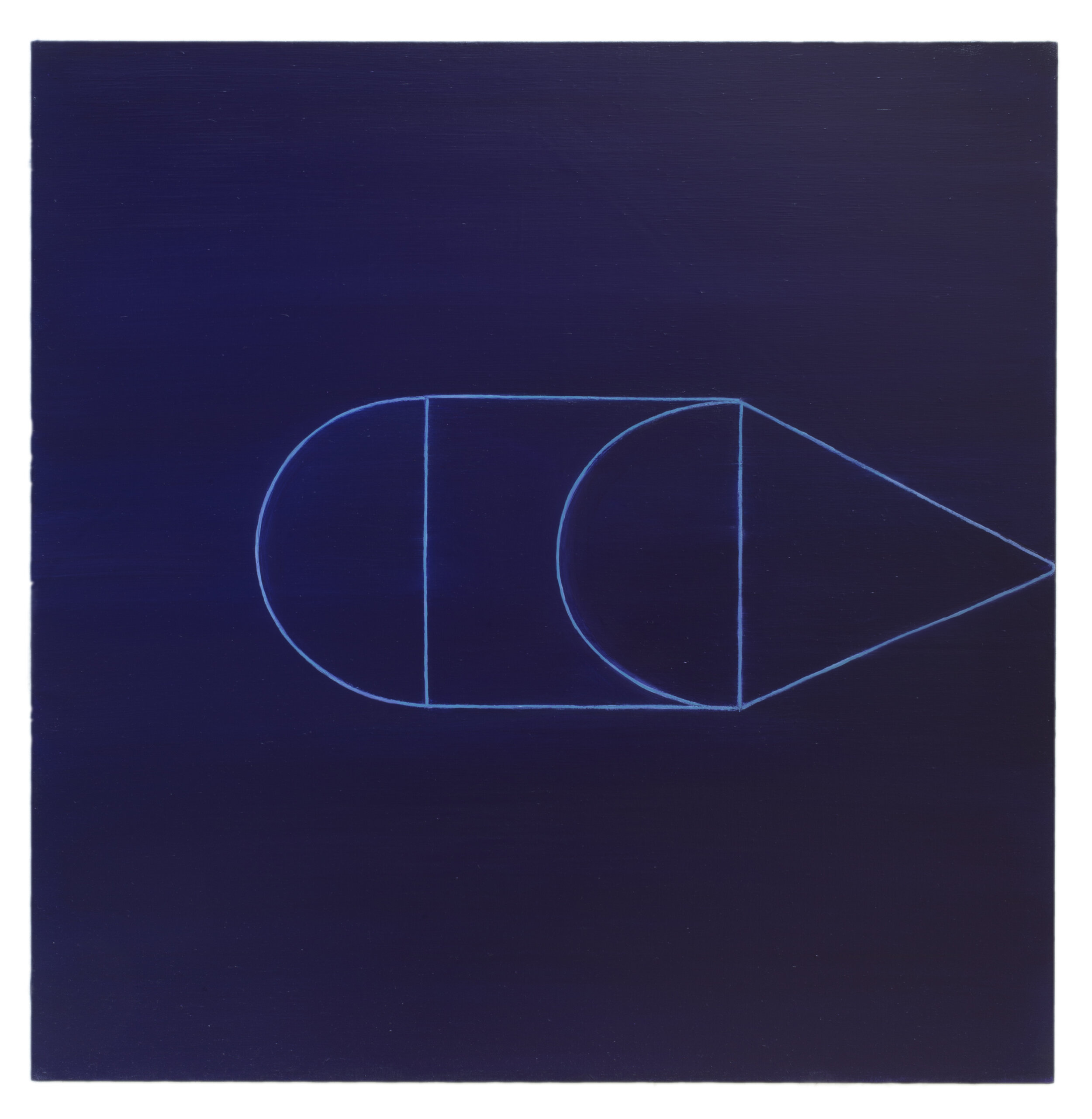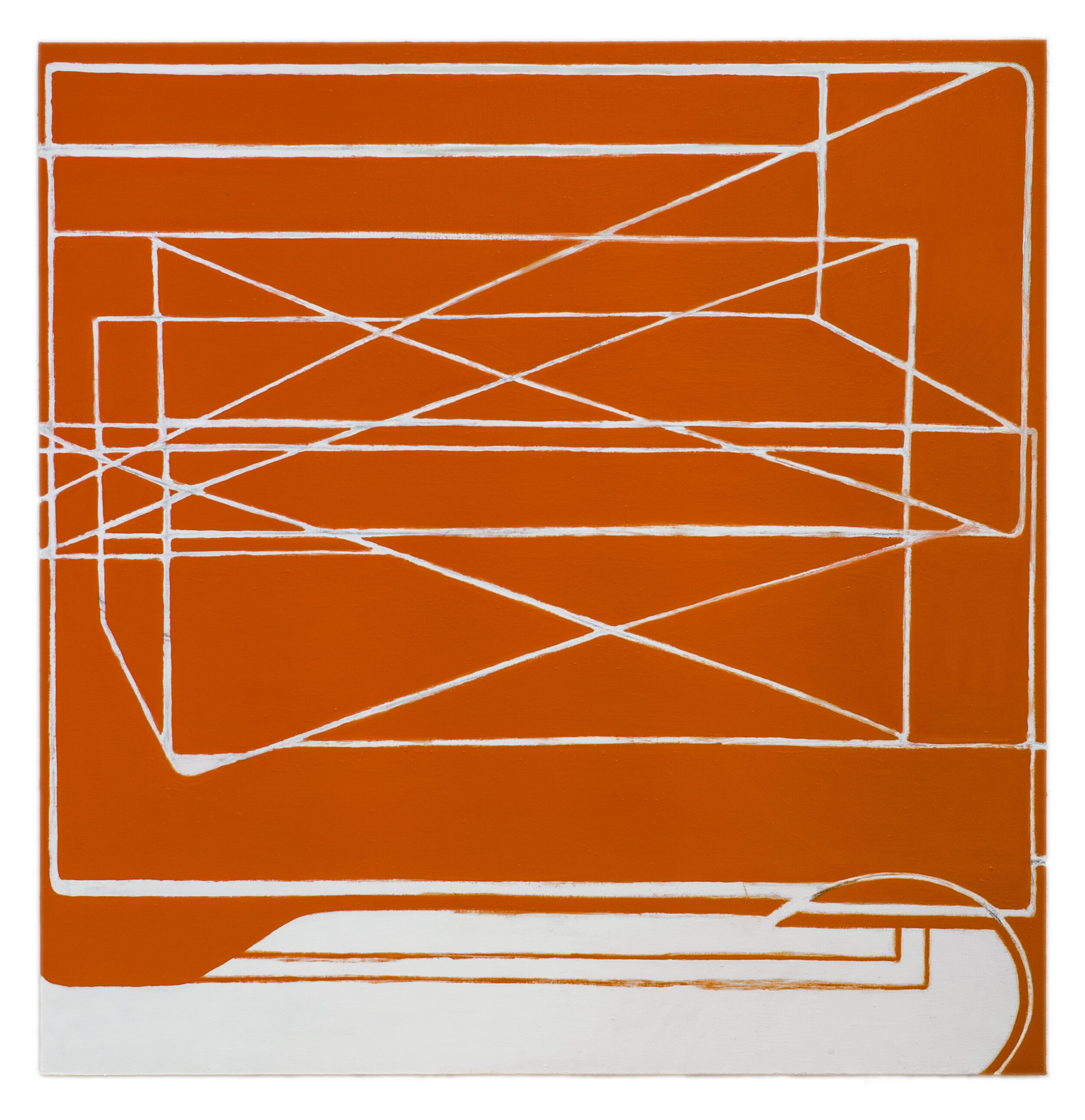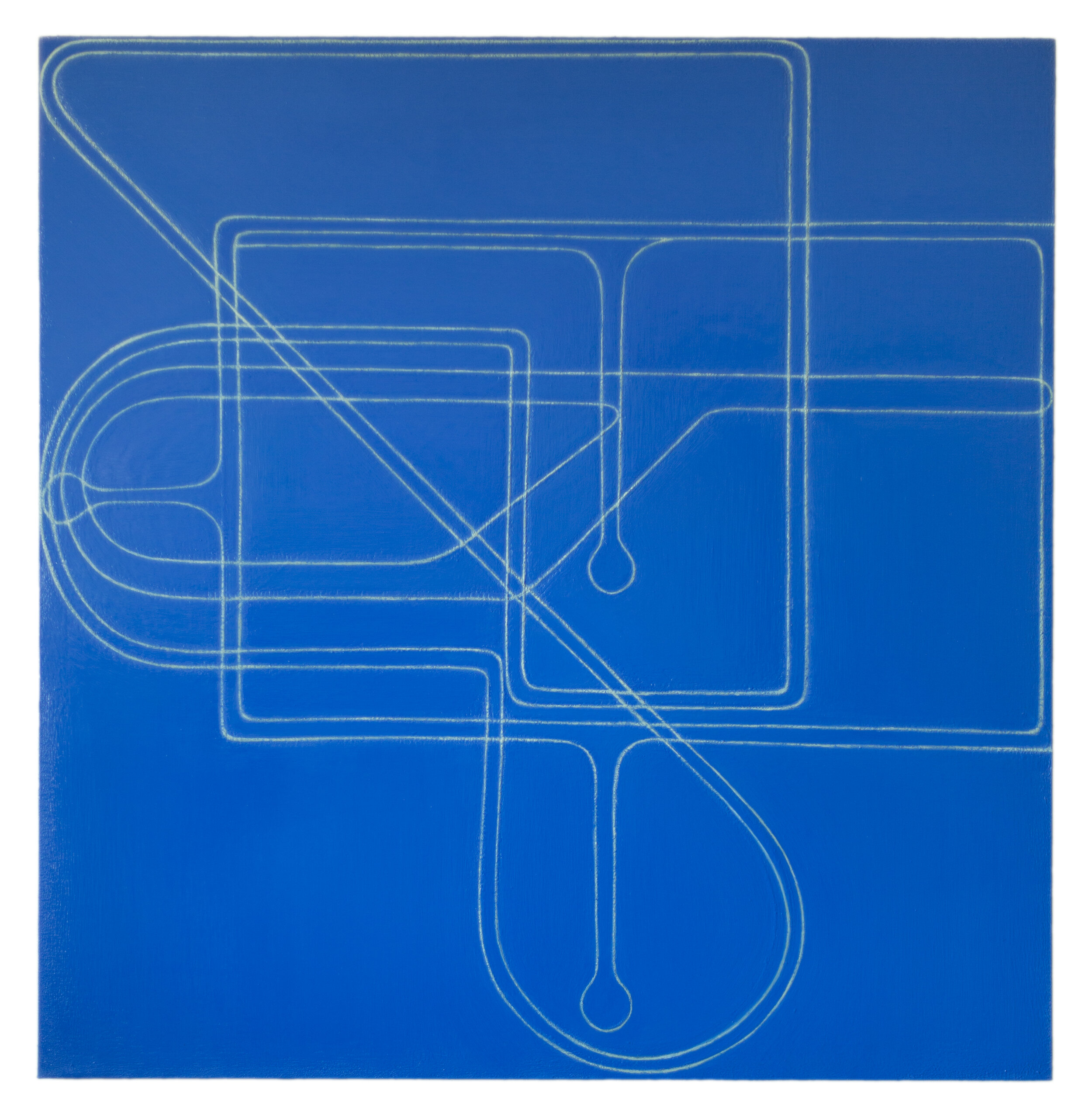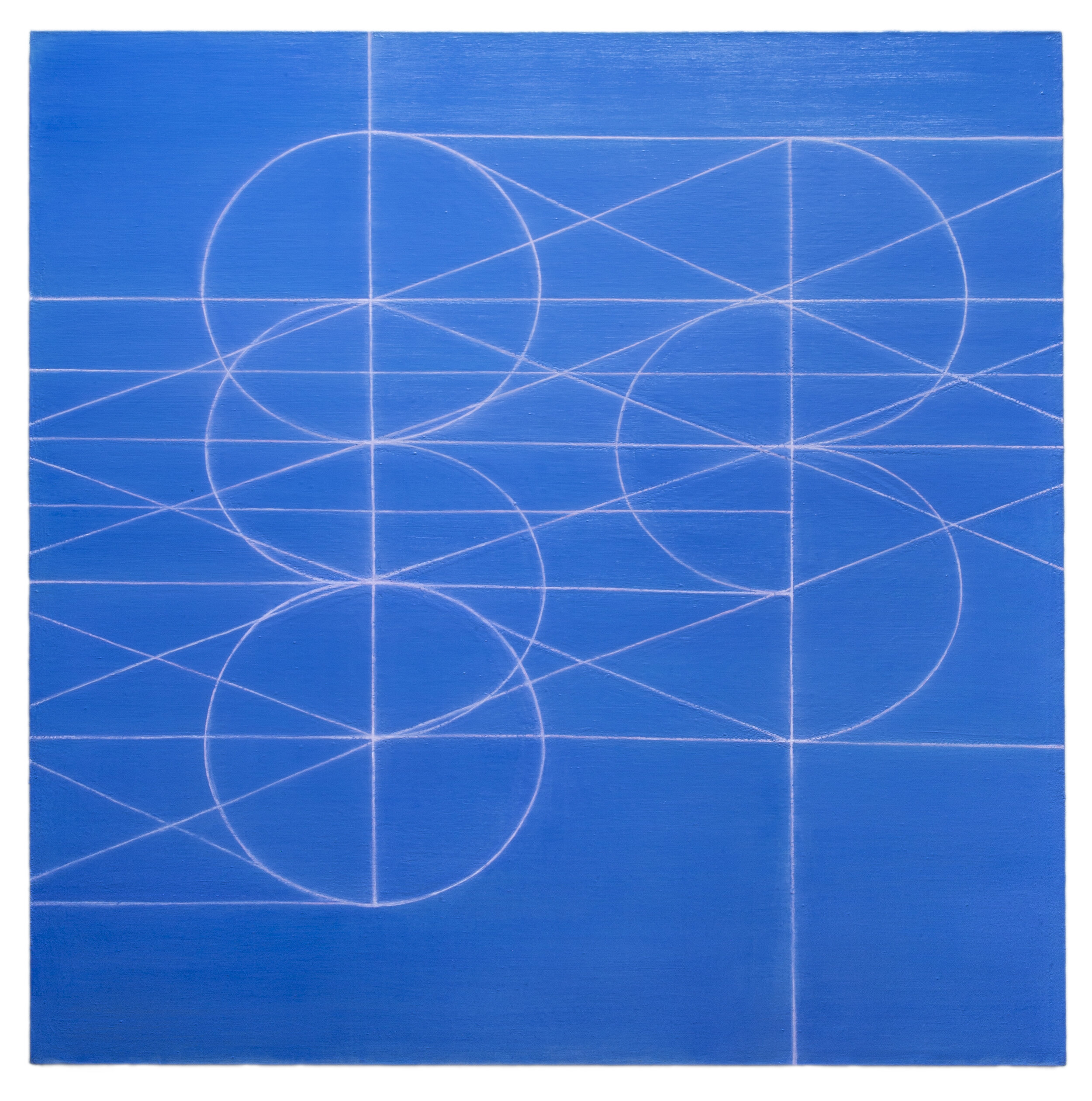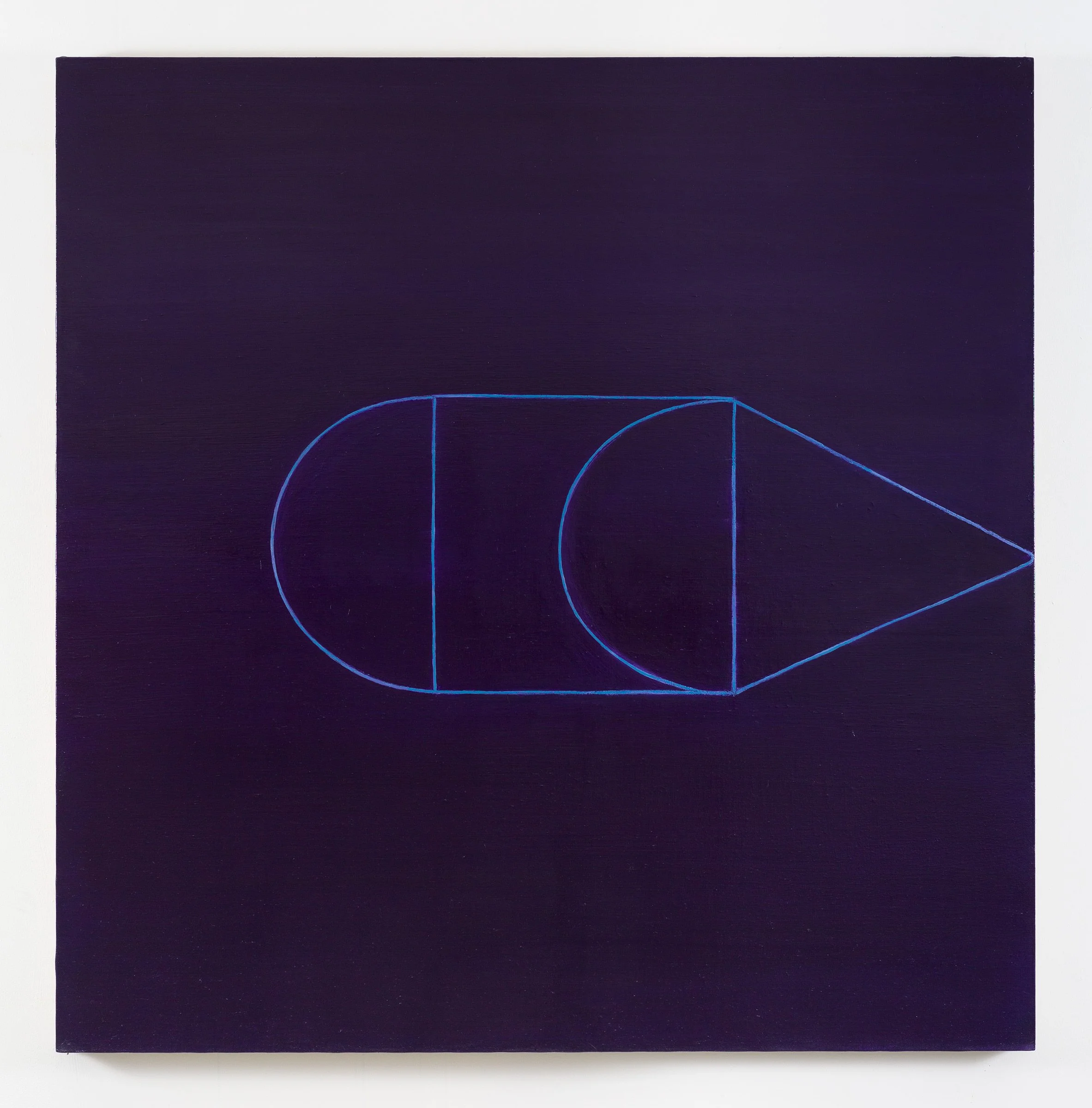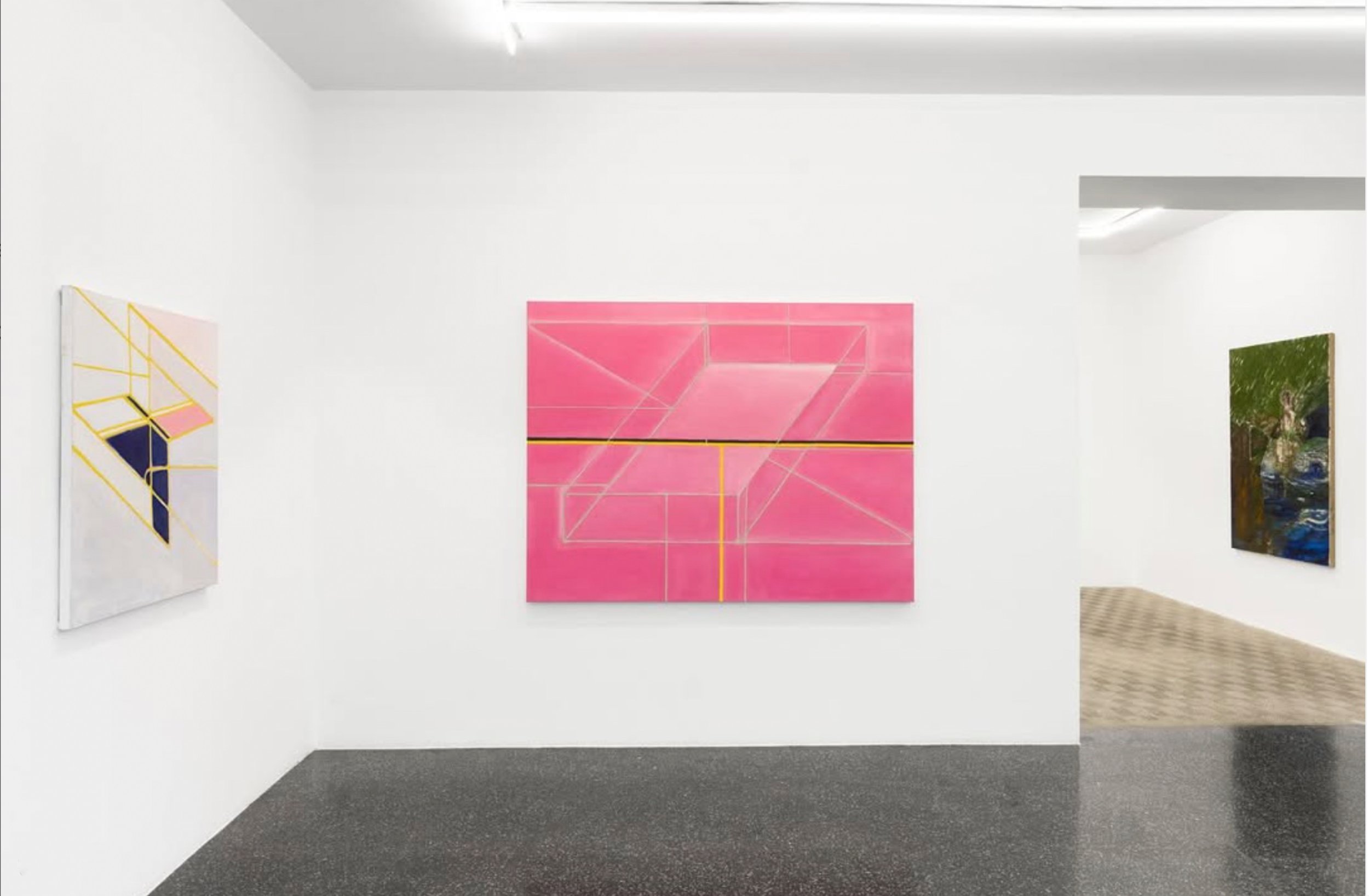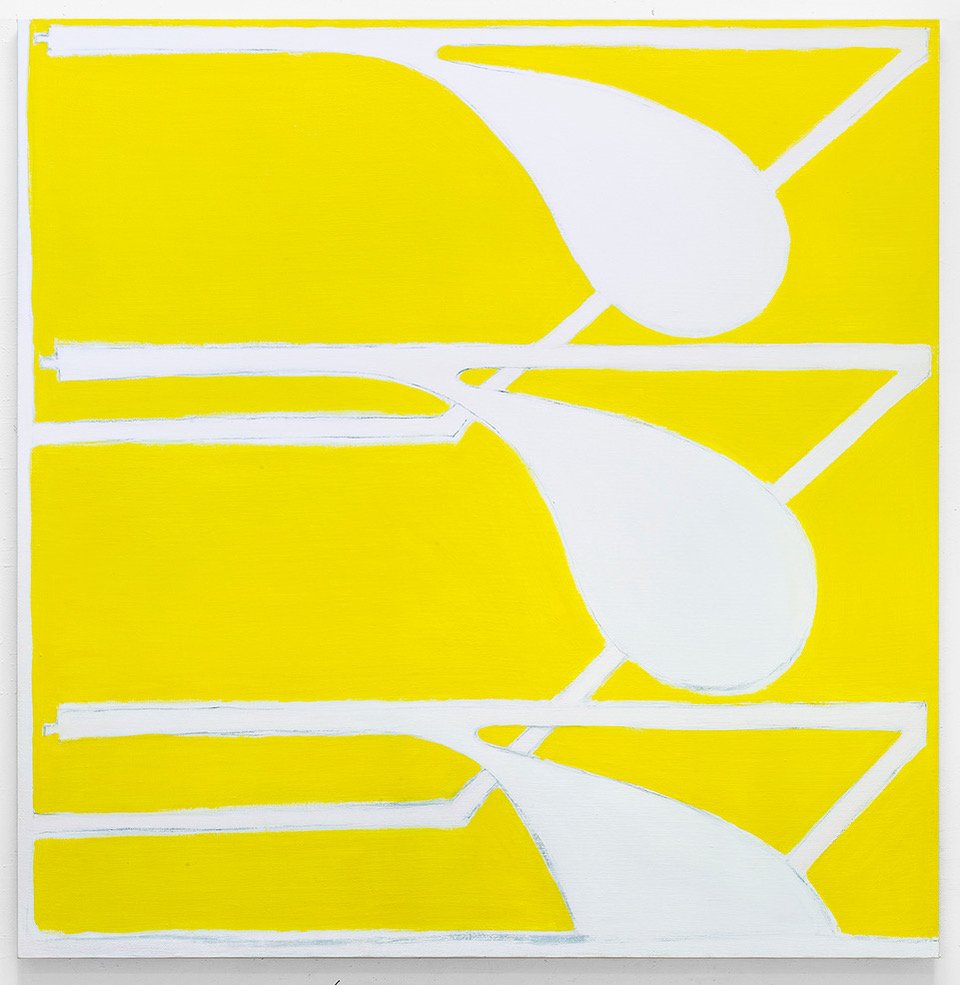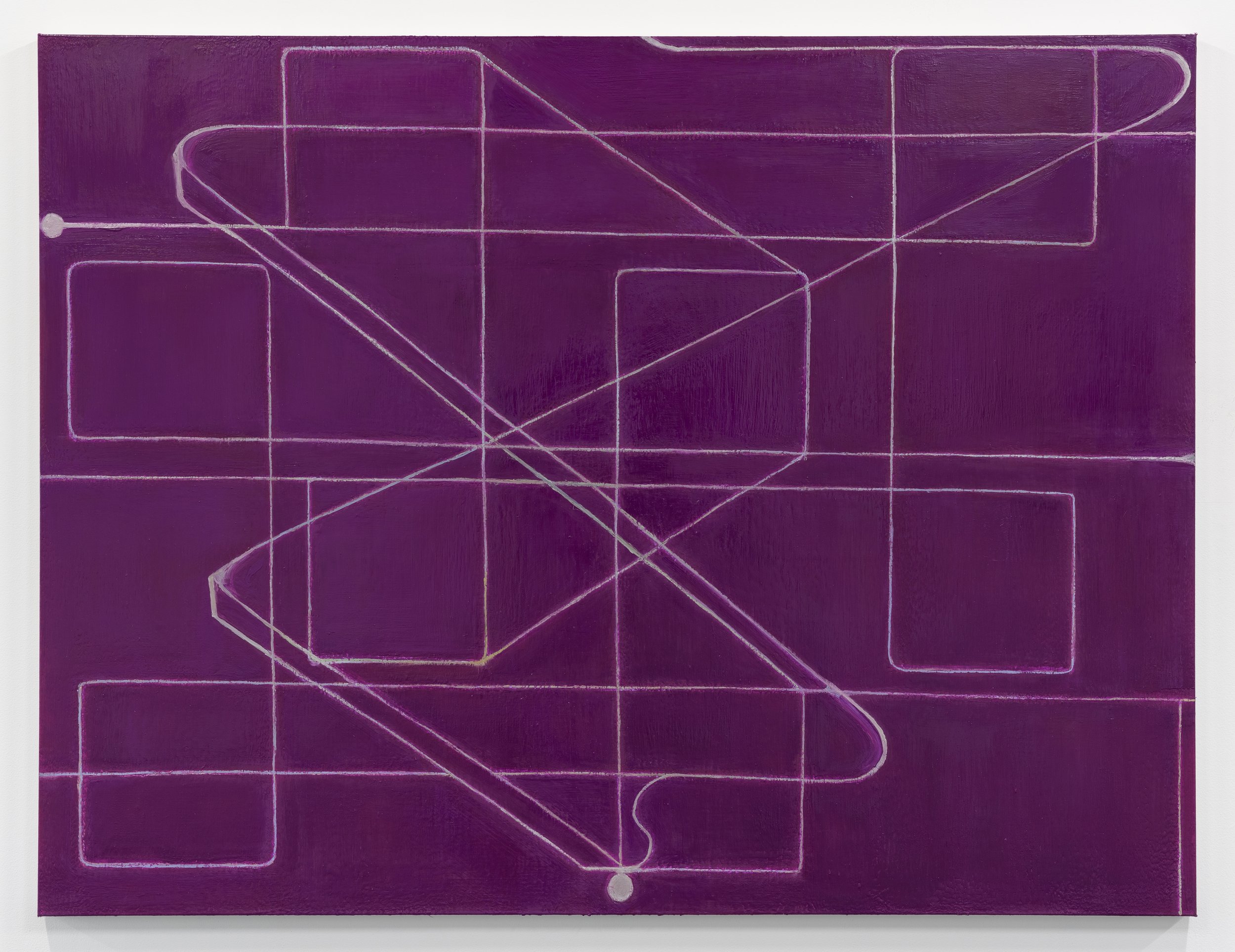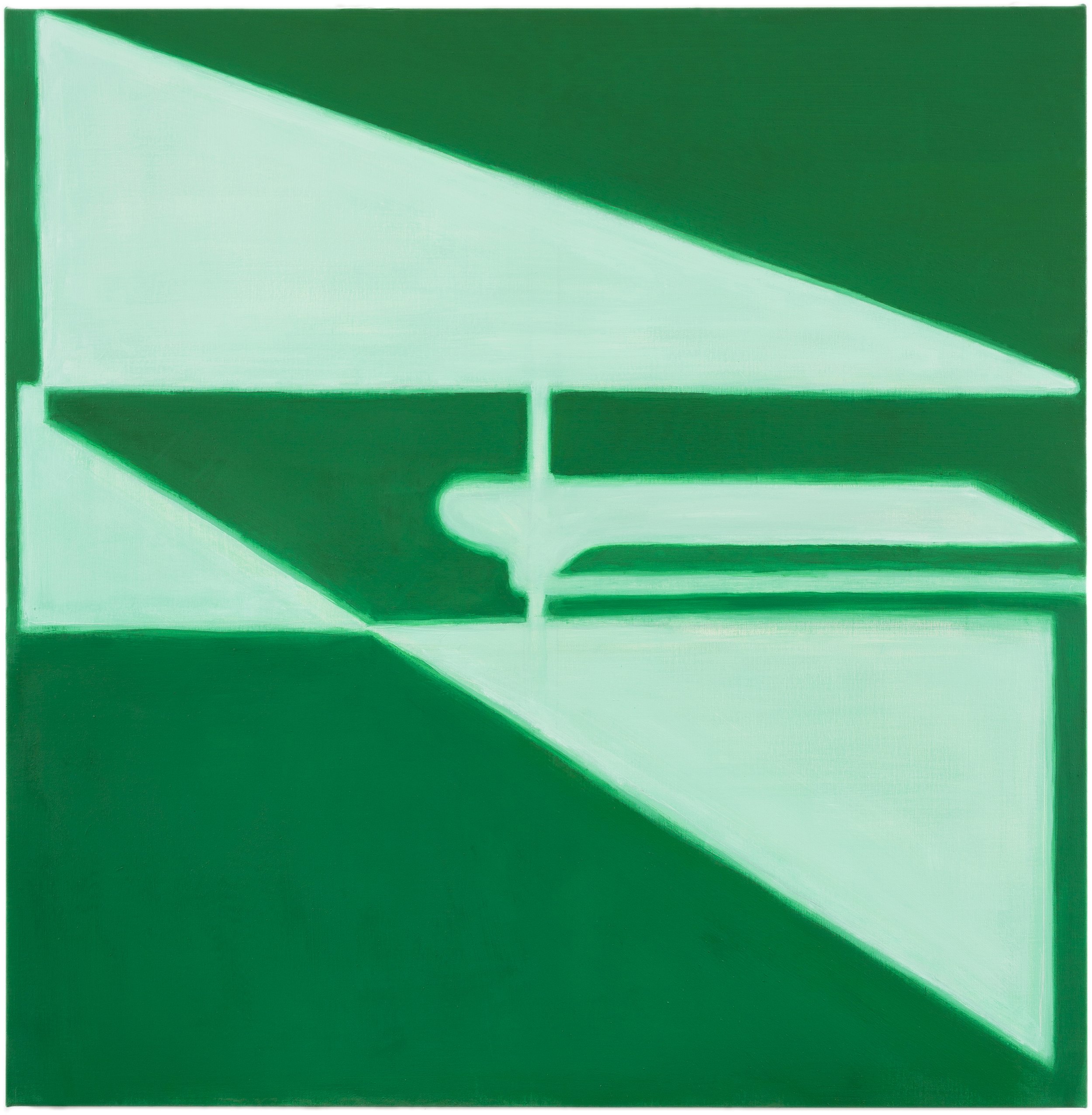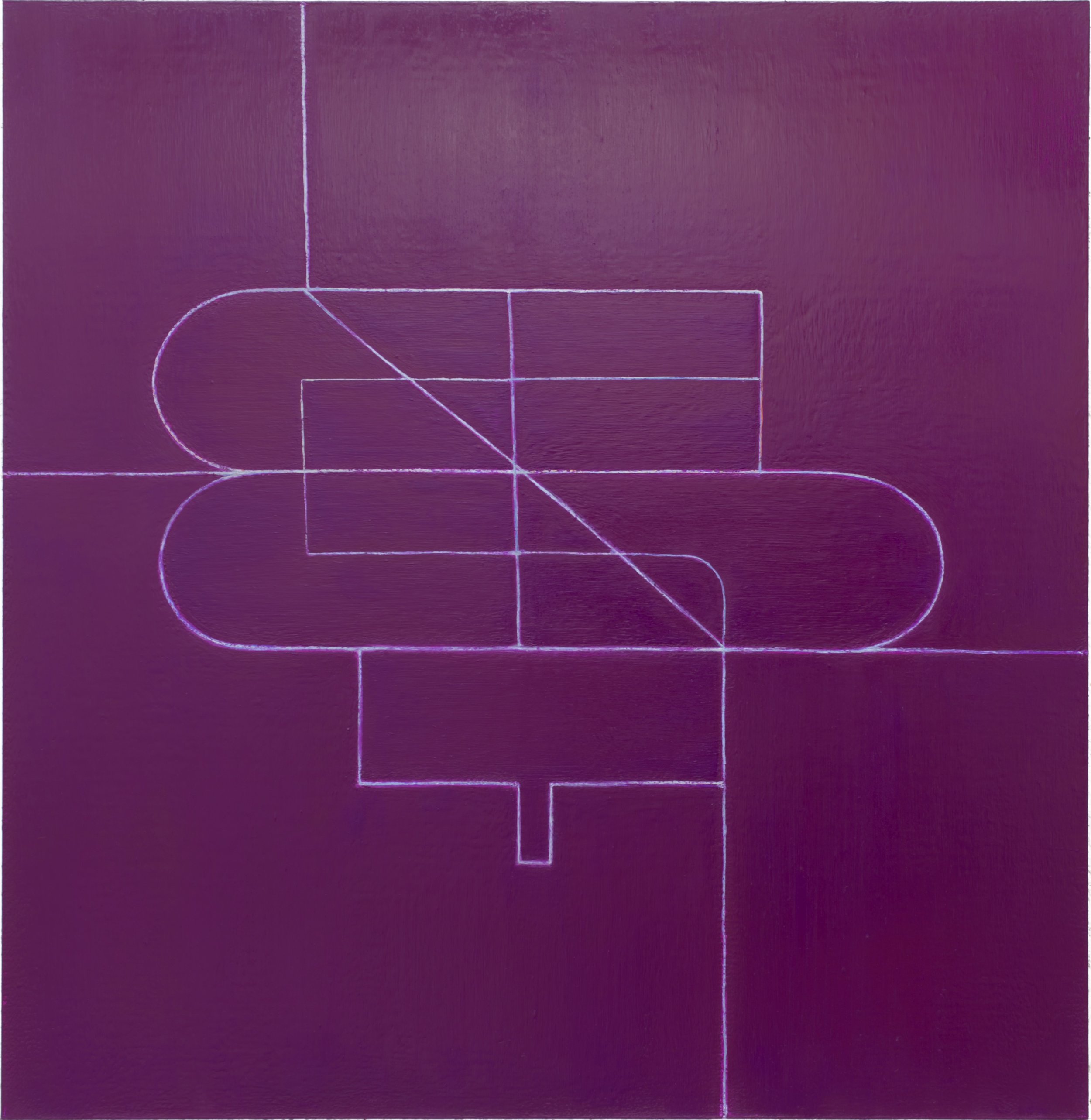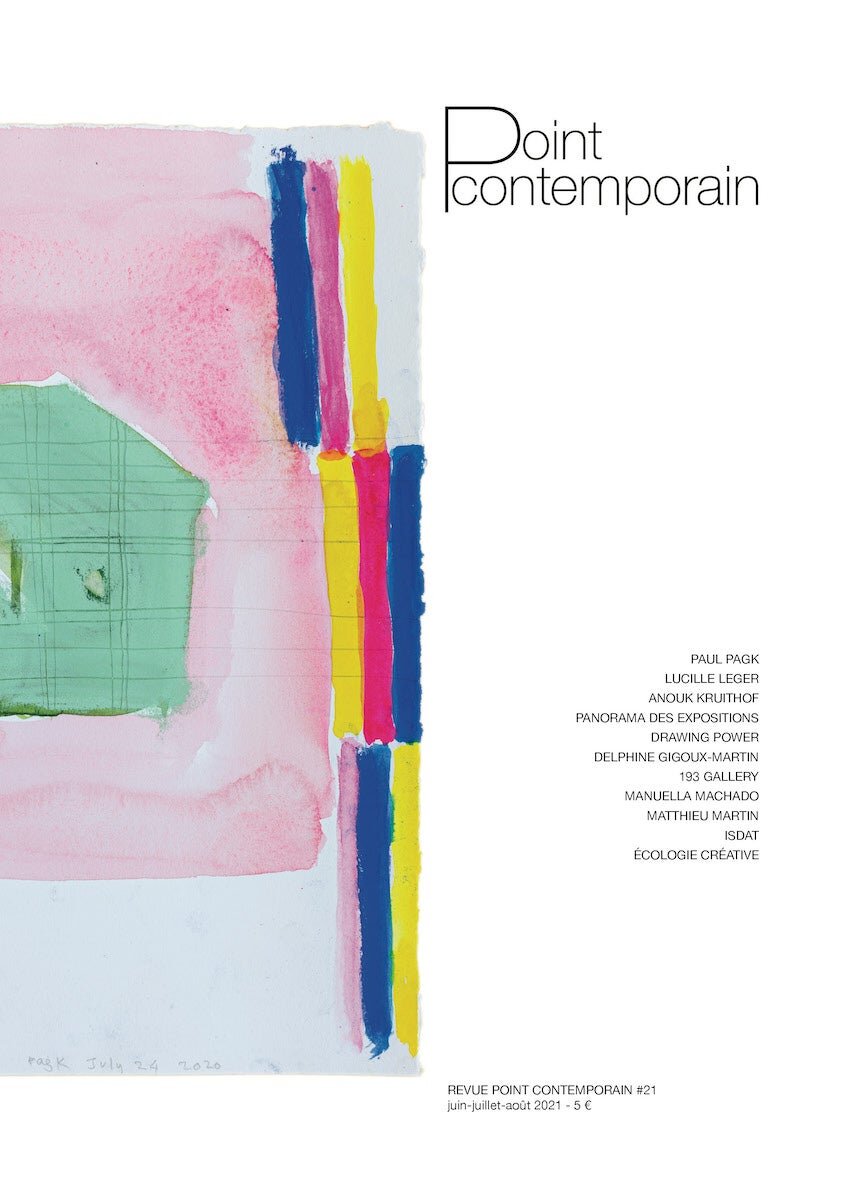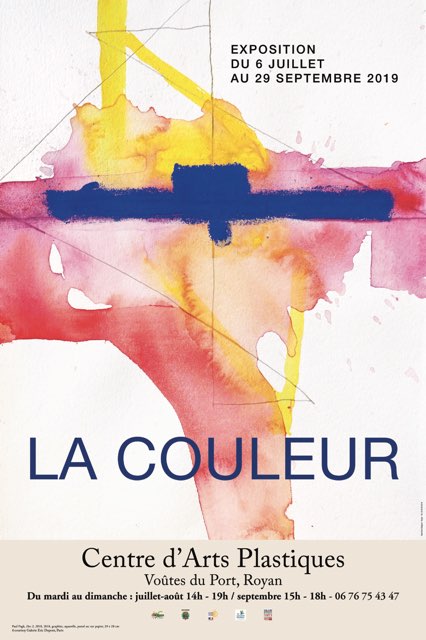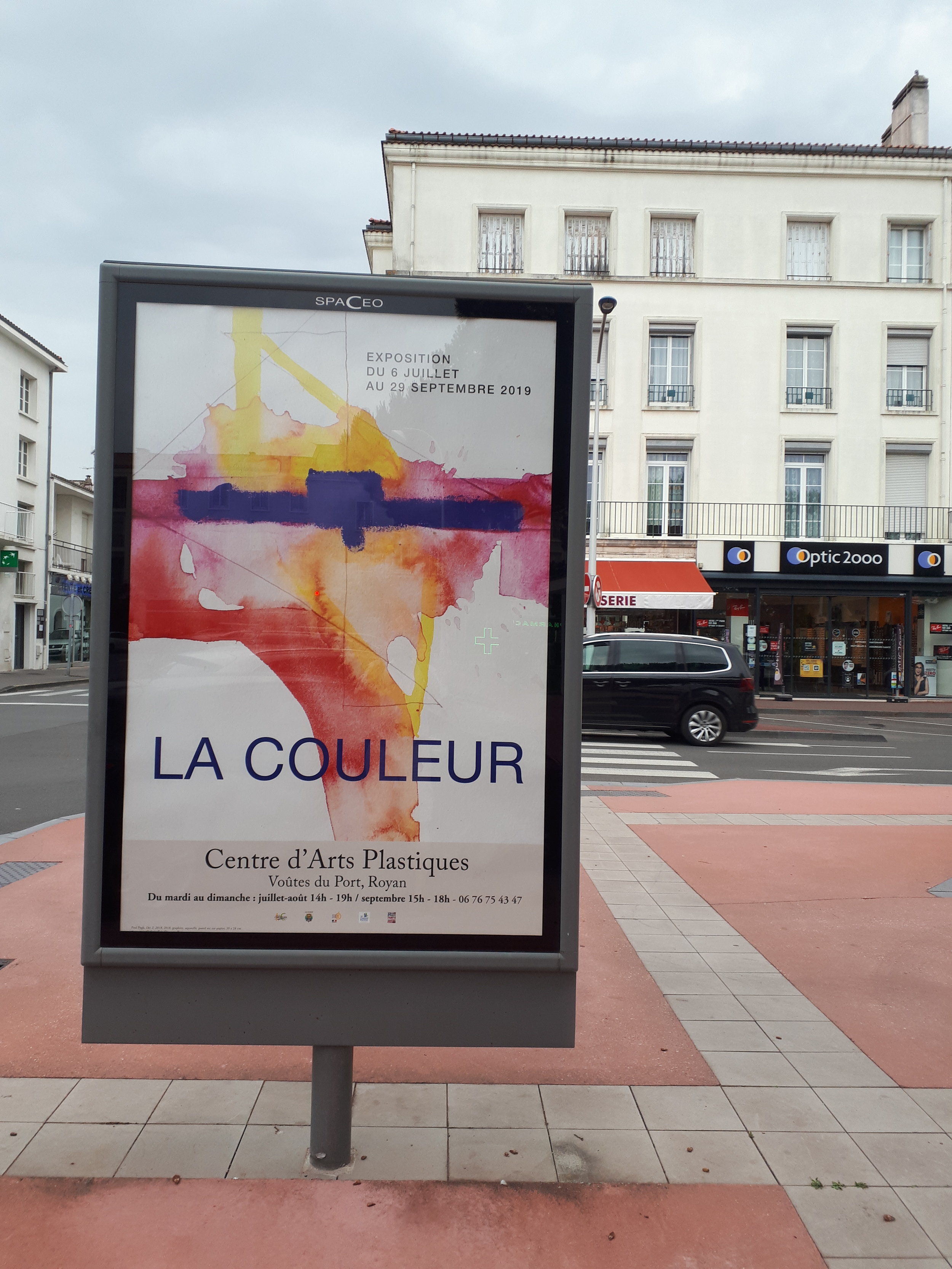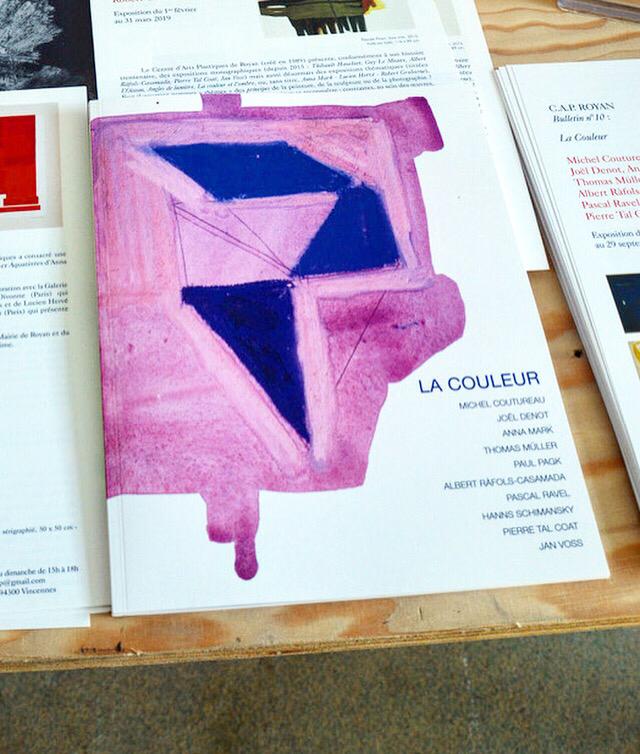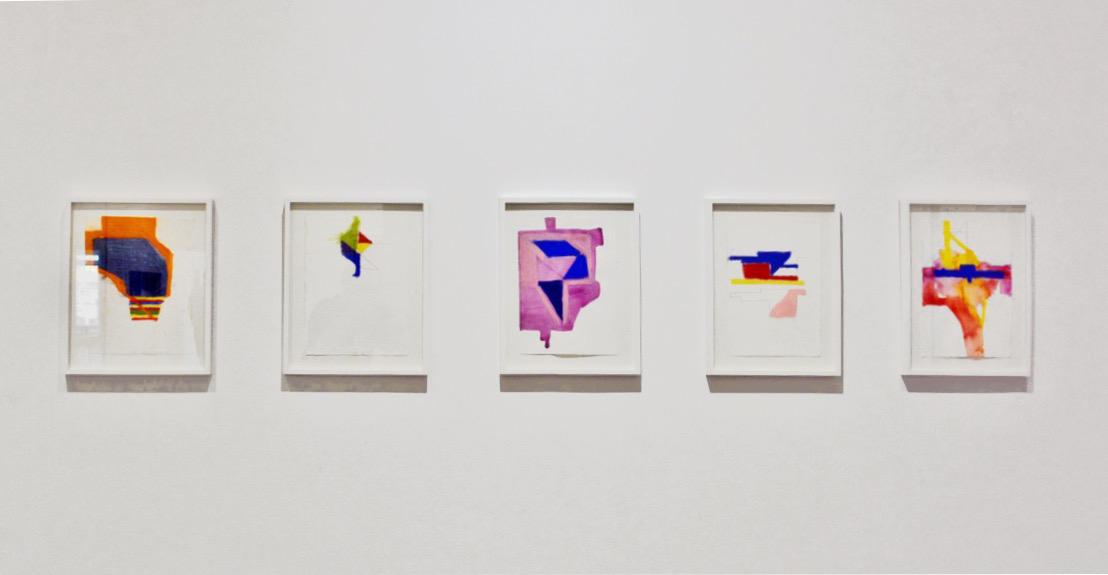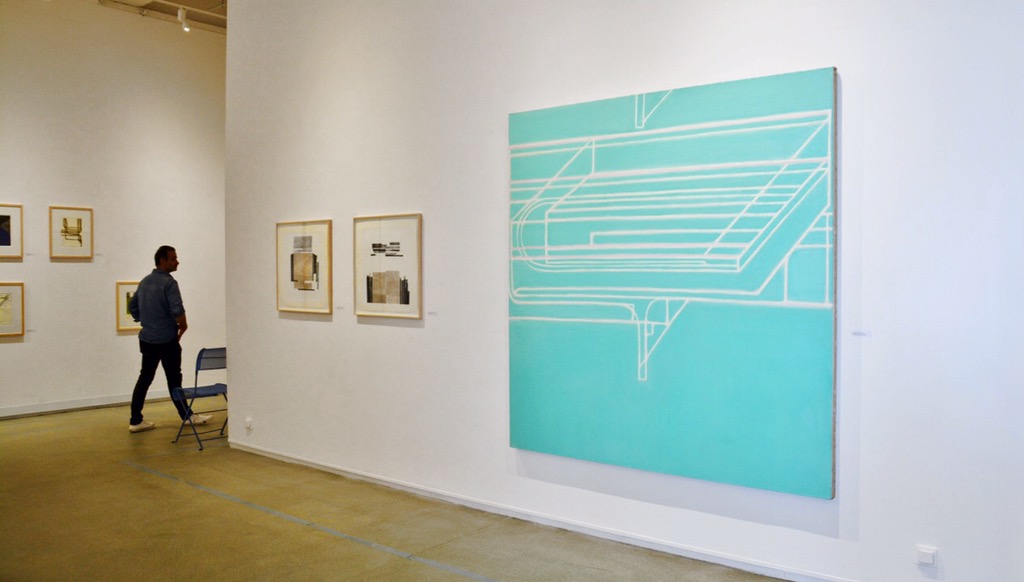Upcoming exhibition, publication and edition:
. Paul Pagk solo exhibition @ Miguel Abreu Gallery, New York - January 16 - March 7, 2026
. Monograph Paul Pagk (bilingual, 224 pages), Ed. Skira Paris, Editor Denise Wendel-Poray
Authors: Adrian Dannatt, Meriam Korichi, Raphael Rubinstein, Molly Warnock
available in Europe: Skira Paris boutique, Skira Milan boutique, selected bookstores, Skira-arte online, FNAC and Amazon.
available in US and Canada (DAP/artbooks, Amazon) : online and selected bookstores, including at Miguel Abreu Gallery, NY
. Estampe, Paul Pagk & Atelier Michael Woolworth, Paris. Commande d’Estampes Natures Diverses, Cnap (Centre National des Arts Plastiques). Available at Artothèques in France.
"Cinnabar" 2015 (Oil on linen, 70 x 70 in / 178 x 178 cm)
"Seeking to articulate notions of time and space ... viewer accesses the painting while being kept on edge by events occurring within; the original perception by body and mind, a starting point on a journey into the painting." Paul Pagk
Recent exhibitions:
Galería Marta Cervera, Madrid, SPAIN
Group Show La Poética del Espacio
Brett Goodroad, Menchu Lamas, Jonathan Lasker, Paul Pagk and Raha Raissnia
A threshold is a pause, a starting point or transition towards something new; an invitation to inhabit space as an act of memory. In that virtuality between the visible and the absent, space takes shape, like a diffuse memory, a sense of half-remembering.
The exhibition The Poetics of Space, inspired by Gaston Bachelard's book, La Poétique de l'Espace (1957), inhabits this threshold. It brings together works by artists Brett Goodroad, Menchu Lamas, Jonathan Lasker, Paul Pagk and Raha Raissnia in a collective show that rethinks space not as something physical, but as a mental resonance, an undefined place between the real and the virtual….
…Paul Pagk’s work is held in the tension of the threshold of space. Geometric shapes, bounded by space, suggest more than they reveal. His minimalist approach exists in an expansive space, bringing to the surface what remains unseen, but implicitly present. The lines in Ishtar oppose a void, filling it with possibilities and opposing forces, which are directed towards multiple variations, creating a space of illusions. Thus, space becomes poetic…
- Lucia Conte, from Press Release
A group show with 26 artists, curated by Jean-Pascal Léger, on the theme of Scale (L’Echelle).
“Scale can mean first and foremost a constructed, geometric repetition, a regular full-empty alternation, but also a gradation.....The infinitely small gives the scale of the vastitude, of the infinitely large (Poussin's figures and landscapes).
Scale can guide the eye and introduce time into space...” (J-P. Léger).
Miguel Abreu Gallery, 36 Orchard st, New York
Miguel Abreu Gallery, 36 Orchard st, New York
Waclaw Szpakowski in Continuity with Paul Pagk
”Distinct in their times, both Szpakowski and Pagk meet in this exhibition emphasizing the continuity of the search for underlying principles of the world through the simplest forms of abstraction—line, rhythm, and color.” – Inga Lāce, from Press Release
Review in The Manhattan Art Review, Kritic’s Korner (1/12/2024)
Drawing Past and Present: Paul Pagk with Master Works from Dürer to Matisse
November 29, 2023 - January 13, 2024
“The notion that a drawing could be in itself a work of art (as opposed to a study or technical diagram for a subsequent painting, building or object) is relatively modern; even more modern is the idea that one can judge and analyze works of art not in terms of their subject matter, their ‘meaning’ but according to their composition, structure and coloration, shapes and tonal deployment.”
– Adrian Dannatt, from Closer to the Force, an essay that accompanies the exhibition.
Miguel Abreu Gallery, New York, USA
88 Eldridge street (Click)
Solo Exhibition January 12 - March 5, 2023
Review in Two Coats of Paint: “Paul Pagk: Pure painting revealed” (click)
Review in The Brooklyn Rail (click)
Galerie Eric Dupont, Paris, FRANCE
“À fleur de peau III : le dessin à l'épreuve du temps”
September 3 - September 22, 2022
Galerie Floss & Schultz, Cologne, Germany
“New York Connection, Summer group show”
July 22 - September 4, 2022
Hionas Gallery is pleased to present the work Queen of Spades and smaller paintings (oil on linen) by the British- American-French artist Paul Pagk. The exhibition titled Queen of Spades is Pagk’s first solo show with the gallery.
Pagk’s painterly language is one of dualities and discovery. While his compositional style communicates a minimalist approach to form, Pagk plays with the flatness of the picture plane (and our perceptions of it) through his use of hand-drawn linework and gestural abstraction, subtle though it may be in places. And yet, it is neither illusion nor process that Pagk is describing in his work. The object that is the painting itself is a form of expression, as are the finely-tuned geometries he creates to relay flattened, deconstructed subjects, each one held in suspension amidst fields of color yet pulsating with life.
The pictorial rhythms inherent in Pagk’s oeuvre are unmistakable. The artist’s brushstrokes, both broad and finite, have a deliberateness that communicates a fluid mind and breathing hands at work. Like architectural blueprints that have shed their skin and rearranged themselves from within, Pagk’s compositions are structurally sound but not in any rigid or mechanical sense. Whatever illusions or sense memories one may experience on the canvas, Pagk’s stated intent is for viewers to “inhabit” his paintings and the spatial constructs therein.
“I am interested in how the act of painting can change our knowledge of painting and engage time and space, body and mind,” says Pagk.
Thomas Park is pleased to announce our inaugural exhibition at the new location on lntaewon-ro in Seoul, Pas de Deux, Paul Pagk's first solo exhibition with the gallery. It is a unique survey of his mid-sized paintings made between 2004 and 2017. This exhibition is also his first solo exhibition in South Korea and in Asia. It will be on view from March 2 to April 15.
In Paul Pagk's Chinatown studio in NY, I began to notice something which felt like a discovery. More often than not, two forms, or potentially two forms appear to be interacting with each other in his mid-sized paintings (20-26 x 20-26"). It could be two full forms; one form is hovering over the other which is similar but not quite identical. Or while one full form is around the center, half of the same form emerges from the edge of the canvas. Or three forms connect together in a way that they appear to merge into two or less. It happens within this mid-sized format more often than his large format paintings that are vertically stacked like a row of books in his studio. If his large paintings are full performances done with labor and intentions, these paintings are akin to chance dialogues. Or small dance pieces where two people dance. In fact, in all of his paintings, regardless of their size, the forms appear to be engaged in some sort of movement.
Artists often work with polarities, two seemingly opposite, even contradictory concepts: figuration and abstraction, form and color, formalness and narrative, stillness and movement. Paul Pagk's works are known for their paradoxical quality, especially for being both geometric and organic simultaneously. Also, his works are so much about space in the most formal sense, but his space draw awareness to one’s own "physical" body in actual space. While his paintings follow the logic of drawing, as you see (or read) the lines on the plain surface, he is a kind of painter who makes his own paint, and invent his own, unnamable colors.
The other day I received in my mail box, Edwin's Tao, Edwin Denby's translation of Tao Te Ching. It was surprising to see that it was like a booklet printed at FedEx Office. Denby made his own choice from the very first word he used; he used the word "It" in place of "Tao." I loved what he did even more in chapter 2 where Lao Tzu actually talks about duality, the wisdom of perceiving it in real life. This is the kind of translation that we would come across in various translations of the book.
Being and non-being create each other.
Difficult and easy support(complement) each other.
Long and short define(shape) each other.
High and low depend on (rest on) each other.
Voice and tone harmonize(blend) each other.
Before and after follow each other.
And here is Edwin Denby's version.
Being and Not Being beget each other,
Heavy and Light crown each other,
Long and Short point at each other,
High and Low turn each other,
Tone and Sound lift each other,
Before and After follow each other.
This, for sure, is the dance critic's version of Tao Te Ching. You see how much movement in his translation? Those words he used to describe the relationships between two opposite concepts sound like dance moves. By using these words, he might have wanted to imply what Art really does in human life. And it also reminded me of Paul Pagk's paintings. I often wonder if I see movement within his paintings due to my knowledge that he used to practice ballet. Or perhaps it is what follows his past experience as a dancer; he naturally uses his body to perceive and perform on a picture plane. In my mind, as soon as I juxtaposed those words, -beget, crown, point, turn, lift, follow- on Paul Pagk's work, everything suddenly made more sense.
Having been exposed to the Asian culture from early years (his best friend in his 20's was the late Korean painter Hyun Soo Choi, they used to play Go and talked about Taoism. And his wife is French-Vietnamese), Pagk seems to "physically" understand the wisdom of embracing dualities. Asian thought is based on organic interactions and dynamic dualities, like the dynamics of Yin and Yang (I-Ching) or Being and Not Being (Tao Te Ching). Paul Pagk may be utilizing this foundation of thinking, without even consciously knowing it, and literally, philosophically "moving" in his work. Roland Barthes used the concept of "the Rare" which can be translated as “Ma 間” in Japan, to discuss Cy Twombly's art; the in-between spaces of the marks and stains in his paintings. Pollock understood and practiced the concept of "forgetting oneself " in the act of painting. This is how his action of making became the painting itself. Paul Pagk's embodiment of the movement he experienced as a dancer, a thinker, and a painter feels never ending as one learns how the world works in Edwin's Tao " ... High and Low turn each other, Tone and Sound lift each other, Before and After follow each other." - Mimi Park
© Copyright, 2022 Thomas Park - 4F, 199, ltaewon-ro, Yongsan-gu, Seoul, Korea Tue-Sat, 11am-7pm
FONDATION FERNET-BRANCA
PAUL PAGK: “Rythmes & Structures”
Oct 30, 2021 - Feb 13, 2022 (click)
Saint-Louis (France) near Basel (Switzerland)
VernissageTV - PAUL PAGK “Rythmes & Structures” / Solo Exhibition at Fondation Fernet-Branca (click)
In this video, we visit Paul Pagk's solo exhibition at Fondation Fernet-Branca in Saint-Louis (France) near Basel (Switzerland). The show features over a hundred paintings and drawings created in the last 20 years and runs through February 13, 2022.
Exhibition Talk with Paul Pagk, Adrian Dannatt & Pierre-Jean Sugier, Oct 30, 2021 (click)
Review by Ambre Philippe, dir. of Fondation Catherine Gide- Patrimoine d’Andre Gide (click in French) and (click for English translation by Google)
MEETINGS AT THE FERNET-BRANCA FOUNDATION - GIRARD / PAGK / ANTONELLI + GIDE
JUIN-JUILLET-AOÛT 2021 (click)
Pages 4 to 6: Portrait Paul Pagk
Cover: “July 24”, work on paper (38x28 cm)
Miguel Abreu Gallery, in collaboration with Sequence Press, are delighted to announce “Doomed and Famous: Selections from the Adrian Dannatt Collection”, an exhibition accompanying the release of Dannatt’s book of the same title. The show, somewhere between a brocante, an alpine monastery library, and a cabinet de curiosité, gathers highlights from the author’s varied collections, assembled over the years and around the world. The exhibition ranges from scraps of paper to rare signed publications, minimal sculpture and rococo treasures. Yes, there will thankfully be works by such renowned artists as Tina Modotti, Richard Prince, Nancy Spero, Richard Smith, Nan Goldin, Noguchi, Allan Kaprow, Rammellzee and Picasso. Yet, equally of interest will be a sweep of intriguing paraphernalia, objets trouvés and gifts by some more recherché writers, political activists, artists and friends. Accompanying notes by Dannatt detail the history of the objects, the often surprising circumstances under which they entered his collection, their problems and provenance (click). Signed copies of the book will be available along with a limited edition print by Hugo Guinness.
Review in Art in America (click): “MEMENTO MORI CAN BE FUN” by David Ebony, March 2021
… “Also among the show’s highlights are abstractions by artist friends like Jan Frank, Paul Pagk, and Olivier Mosset. Yet the exhibition, on view through March 13, is neither a self-aggrandizing autobiographical exercise nor a strictly commercial effort. The collection was clearly not put together for the sake of monetary gain. It features, rather, a surprising number of crosscurrents—art historical and personal—that lend the show considerable conceptual weight, and a rather broad appeal….”
RAUM SCHROTH in Museum Wilhelm Morgner, Soest, Germany
“MULTILAYER VISION 20/20” - Oct 10, 2020 to April 25, 2021
“July 17, 2020”, work on paper, 15x11in/ 38x28cm
International Group Show “MULTILAYER” with 50 abstract artists, curated by Ivo Ringe and Juliane Rogge:
at RAUM SCHROTH in Museum Wilhelm Morgner, Soest, GERMANY: from October 10, 2020 to April 25, 2021
will travel to: 1) Art Center Künstlerhaus Plüschow, Germany; 2) Tremenheere Sculpture Gardens, Penzance in Cornwall, United Kingdom; 3) Vasarely Museum, Budapest, Hungary.
“Abstract Art from the Miettinen Collection”
Berlin, Germany
Sept 9 - Oct 31, 2020
Untitled, 2015 (oil on linen, 63,5 x 61 cm)
“Abstract Art from the Miettinen Collection” at Miettinen Collection, Berlin, GERMANY: from September 9 to October 31, 2020 (click here) with works from:
Pierre Alechinsky, André Butzer, Olafur Eliasson, Günther Förg, Secundino Hernández, Marcel Hüppauff, Pertti Kekarainen, Ola Kolehmainen, Marlena Kudlicka, Matti Kujasalo, Ville Kylätasku, Niko Luoma, Eddie Martinez, Kirsi Mikkola, Jussi Niva, Albert Oehlen, Paul Pagk, Matthias Schaufler, Emanuel Seitz, Joel Shapiro, Henning Strassburger, Katja Strunz, Marianna Uutinen, Ulrich Wulff, Zoobs and more.
“CONSTRUCTED” at Contemporary Art Galleries University of Connecticut, USA Oct - Nov 2019
Beverly Fishman, Marilyn Lerner, Paul Pagk, Joanna Pousette-Dart and Cary Smith
“In the city”, 2018, oil on linen, 70x70in/ 178x178cm
Group show “CONSTRUCTED” curated by Barry Rosenberg, Director of CAG, at Contemporary Art Galleries, University of Connecticut, USA - October/November, 2019
"The Abstract Zeitgeist in Storrs" By Stephen Maine in TWO COATS OF PAINT , November 16, 2019
Excerpt: “On view at the University of Connecticut’s Contemporary Art Galleries through November 29 is “Constructed,” a lively exhibition of seventeen works by Five distinguished midcareer painters whose handling of color—as a kind of visual armature—is inseparable from structure. The show’s curator, Museum Director Barry Rosenberg, calls on Beverly Fishman, Marilyn Lerner, Paul Pagk, Joanna Pousette-Dart and Cary Smith for evidence that, in a rising challenge to the current fashion for Figurative painting, “a counterrevolution featuring new tactics of abstraction is bubbling to the surface.”
Further along in the press release, Rosenberg asserts that “today’s best abstract art isn’t a redo” of past movements or styles or approaches. “Rather,” he writes, “this work is embedded with the personal experiences of these artists, speaks to this cultural moment, and draws inspiration from the broader history of abstract painting.”….
….A scaffolding of thin, slate-blue lines suggesting flattened cages or fire escapes or a game board gone slightly haywire subdivides the uniform, pale pink ground of Paul Pagk’s imposing La vie en rose/in the flesh. Fine-tuned horizontals, verticals, diagonals and semicircles compartmentalize the canvas, yielding scores of contiguous zones or territories. Subtle though it is, a nonconforming stripe is the main event. This daring brushstroke—in a pink barely paler than the ground—breaks free, races across the painting, hangs a hard right and angles downward toward an eccentric teardrop shape dangling like a carrot.
Two exquisite drawings suggest the origins of Pagk’s board game/cage images (there is a second painting, equally commanding) might be in an exploration of linear perspective and/or axonometric drawings. The inclusion of these small framed works varies the visual rhythm of the installation, which includes primarily mid-size paintings.
The exhibition is visually dense and tests the compact confines of the gallery. Such crowding could be intentional, I suppose, a curatorial gesture alluding to the visual overload that cultural commentators often cite as a characteristic of contemporary life. And really, if you’re fomenting a “counterrevolution,” you’d better bring plenty of ammunition. - Stephen Maine
Panel Discussion: Abstraction Reconsidered, October 17 @ 5pm: (click here)
“Since the turn of this century, figuration and narrative painting have been dominating the discipline’s cutting-edge trends. Today influential art periodicals are overflowing with images, reviews and stories concerning figurative painters, and it is predominantly this type of art that is being marketed at leading commercial galleries and showcased at museums around the world.
The 2019 Whitney Biennale confirmed a strong preference by the museum’s curatorial team towards figurative and politically narrative works. However, it does appear that a counterrevolution featuring new tactics of abstraction is bubbling to the surface. Abstraction never took the ten-count.
CONSTRUCTED demonstrates geometric abstraction is reaching new heights in the 21st century. It isn’t a redo of 20th century Modernism nor late-1980s Neo-Geo Conceptualism, but rather draws inspiration from the broader history of abstract painting and these artists personal and timely experiences.
All five painters are today considered mid-career. What’s to be appreciated is that their art remains fresh deep into their careers and that they are today being reevaluated in light of abstract painting’s resurgence.” - Barry A. Rosenberg
Featured in the show from Paul Pagk: two large paintings “La vie en rose - In the flesh”, 2018 (oil on linen, 60 x 78 in/152 x 198 cm) & “In the city”, 2018 (oil on linen, 70 x 70 in/ 178 x 178 cm), and two works on paper from 2019.
C.A.P. Royan, France
“LA COULEUR”, Summer 2019
Pierre Tal Coat, Pascal Ravel, Thomas Muller, Paul Pagk, Joel Denot, Albert Rafols-Casamada, Michel Coutureau, Anna Mark, Jan Voss, Hans Schimanski
Group show LA COULEUR, curated by Jean-Pascal Léger at CAP Royan, FRANCE - July 5 to September 30, 2019 with Pierre Tal Coat, Pascal Ravel, Thomas Muller, Paul Pagk, Joel Denot, Albert Rafols-Casamada, Michel Coutureau, Anna Mark, Jan Voss, Hans Schimanski. Centre d’Arts Plastiques de Royan - Direction: Jean-Pascal Léger
On view from Paul Pagk: a large painting “The Duke”, and five drawings.
Portrait PAUL PAGK in Point Contemporain #14 - sept-oct-nov 2019
Portrait PAUL PAGK in Revue Point Contemporain #14 - 2019 by VALÉRIE TOUBAS and DANIEL GUIONNET
En introduction à l’un de ses séminaires, Jacques Lacan définit la « géométrie euclidienne », la « ligne droite » et, au- delà, le « raisonnable » comme des fantasmes. Le fantasme est ce proche et ce lointain, un désir équivoque vers lequel on tend mais que l’on rejette, il est un double de soi dans un espace et une situation reconfigurés par son propre désir. Travaillant sur les notions de perception, de construction de l’espace, de vide et de plein, de présence et d’absence, de rationnel et d’irrationnel, Paul Pagk n’a de cesse d’interroger ce « raisonnable » par des dédoublements répétés que cela soit par les motifs en peinture, les formats, la sérialité mais aussi par le recommencement du geste et du trait, jour après jour, dans ses dessins. La pensée de l’artiste nous devient accessible dans le voisinage des œuvres, dans les liens qui les unissent et qui se manifestent lorsqu’il les dispose dans des accrochages mettant en évidence la persistance d’une recherche qui dure depuis plus de 30 ans. Une recherche à double sens, qui nécessite des allers-retours et en cela, qui est elle-même équivoque, engageant le corps comme l’esprit, et qui n’a de cesse de nous troubler… (click for full text)
Directed by Terence Donnellan (2019)
Documentary film Artists in NYC (2019): “The documentary explores what it means to be a visual artist living and working in New York City. The artists have traveled from across the country and around the world to make New York City their home. All of the artists have exhibited domestically, and many have shown internationally. Some artists are in museum collections, others have been in prestigious art fairs and biennials.” Produced by Sanja Frank & Terence Donnellan
The Artists: Alfredo Salazar-Caro, Alteronce Gumby, Anki King, Brett Wallace, C. Michael Norton, Coby Kennedy, Cordy Ryman, Daniel John Gadd, Etty Yaniv, Federico Solmi, Grace Roselli, Greg Haberny, Heather Morgan, Hyon Gyon, Katherine Bradford, Loren Munk / James Kalm, Michael David, Paul Pagk, Phong Bui, Pat Phillips, Rosalind Tallmadge, Vieno James, William Robertson. The Musicians: Bob Dylan, John Coltrane, Sun Ra, Ahmad Jamal, Joseph Arthur, and a variety of new and younger blues, hip hop, and rap artists.
TRAILER: https://www.artistsinnyc.com VIMEO: https://vimeo.com/ondemand/artistsinnyc DVD: http://kunaki.com/Sales.asp?PID=PX00ZPPK92
Summer 2019, Galerie Eric Dupont, Paris
Left to right: Nicholas Nixon, Paul Pagk, Pascal Convert
Paul Pagk
Book Interaction - Text “Labyrinths of Perception”
by Meriam Korichi
on Blurb English (click) - en Français (cliquer)
or at Printed Matter, New York (click)
Review of Interaction in Le Figaro 2019
“The Musical Color of Paul Pagk”
by Sophie de Santis
Paul Pagk, “Five 2 one”
Review in Le Figaro/Figaroscope:
“La couleur musicale des toiles mathématiques de Paul Pagk” by Sophie de Santis (14/04/2019): “On plonge dans les toiles abstraites de Paul Pagk comme dans une piscine d’eau douce. L’éclat des pigments purs qu’il broie lui-même à l’huile apporte cette profondeur vert turquoise, jaune soleil, rouge vermillon à ses très grands formats ... “(cliquer pour lire plus)
The Musical Color of Paul Pagk (translated): "One plunges into Paul Pagk’s abstract paintings as though into a freshwater pool. The radiance of pure pigments - turquoise green, sunshine yellow, vermillion red, all hand-ground by the artist in oil - brings depth to his large scale paintings….” (click for more)
- Group show Courant à Contre Courant, Collection Quasar, Peyrehorade, France - March 2018
Paul Pagk, 1994 (Oil on linen, 165 x 165cm)
Group show: Pierre André - Vincent Barré - François Boisrond Joël Brisse - Pierre Buraglio - Damien Cabanes Roland Cognet - Noël Cuin - Christophe Doucet Daniel Gerhardt - Lionel Godart - Toni Grand François Jeune - Joël Kermarrec - Jean-Yves Langlois - Bertrand Lavier - Konrad Loder François Martin - François Mendras - Pierre Nivollet - Bernard Pagès - Paul Pagk Jean-Pierre Pincemin - Jean-Claude Pinchon François Priser - Miguel Sancho - Christian Sorg Dominique Thiolat - Florence Valay Claude Viallat - Julião Sarmento



